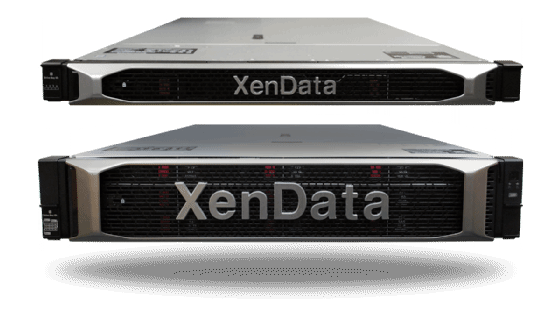
bdavid32 - stock.adobe.com
New XenData appliances provide bridge between disk and tape
XenData seeks to simplify managing LTO tape libraries but finds itself competing with disk, public clouds, other tape vendors and 'poor storage management.'
XenData added two appliances to its portfolio of storage servers for managing LTO libraries: the X20 and the X40.
XenData Archive Appliance X20 and X40 bridge the file and tape worlds, allowing files to be written and read via SMB and FTP protocols like any disk-based share. This enables file-based applications to offload data to LTO to free up space. The appliances are compatible with LTO libraries from Dell, HPE, IBM, Overland Storage, Qualstar, Quantum and Spectra Logic. The appliances can also replicate to cloud object storage and are certified to work with Azure Blob, AWS and Wasabi.
The XenData Archive Appliances are suited for use cases where large amounts of data are generated and need to be stored long-term, but the archived data still needs to be accessible and even changed on rare occasions. Active data is stored on flash or disk, but as projects end, that data is pushed off into tape for better storage economy. This is typically seen in media and entertainment, healthcare and research organizations. More than 90% of XenData's customers are media and entertainment companies, including Warner Bros. Animation. Therefore, the X20 and X40 have integration mods for popular media industry applications such as Avid Interplay, CatDV, Marquis Parking and Metus MAM.
The X20 and X40 share the same capabilities, but they differ in size. The X20 is a 1U model that supports tape libraries with up to 50 slots and two internal LTO drives. This model includes a 14 to 28 TB disk cache for more frequently accessed files and runs on Windows 10 Pro. The 2U X40 supports tape libraries of unlimited size and up to four internal LTO drives, potentially scaling to petabytes of data under management. Its cache is a 50 TB RAID and it runs on Windows Server 2019.
Pricing starts at $9,800 for the X20 and $18,200 for the X40.
XenData CEO Phil Storey said many media organizations, especially smaller ones, are using disk for long-term storage because it's simpler to manage. However, disk-based storage lacks tape's longevity, so data sitting on those disk drives may become corrupt after five years and potentially be lost forever. Storey said that scenario happened to a major Hollywood studio that has now become a XenData customer.
"Poor storage practice is a big competitor to us," Storey said.

There are still doubts about the reliability and simplicity of tape, according to Storey. The X20 is meant to provide a relatively low-cost entry point into managing a disk-and-tape environment. While the XenData Archive Appliances can work with customers' existing LTO libraries, XenData also partnered with Qualstar to sell a "library kit," which includes XenData's appliances, Qualstar's tape libraries and LTO-8 tape cartridges. Storey said this package can cost less than $27,000 and provides a complete, functioning system of up to 600 TB of nearline storage.
XenData Archive Appliances compete with Quantum's StorNext and Spectra Logic's BlackPearl. Storey said XenData's advantage is that its appliances are standardized compared to competing products, which use proprietary file systems or require further investment into their technology stacks. XenData is designed to work with LTO libraries from multiple manufacturers -- even ones that directly compete with XenData.
Christophe Bertrand, senior analyst at Enterprise Strategy Group, said tape's cost-to-capacity ratio is unbeatable, even when compared to the coldest cloud storage tiers on AWS or Azure. According to his research, Bertrand found that organizations using tape technology perceive optimized storage cost as one of the top benefits of tape, second only to proven reliability. LTO tapes can hold data for up to 30 years without loss or corruption, provided they are properly stored.
On the other hand, cost isn't everything. Bertrand recognized that some organizations will use cloud storage even if tape is cheaper simply because they won't have to deal with managing more on-premises infrastructure. Secondly, his research has shown a growing market preference for consumption-based models. However, Bertrand pointed out that ultimately, even if a customer were to use cloud storage for long-term retention, their data will still likely sit in a tape system -- just not theirs.
"Tape has a very bright future because of the storage economics," Bertrand said.
Bertrand said the XenData Archive Appliances are useful tape and media asset management integration tools, but they lack automation. He said that's fine because XenData's goal with the product is media integration, but he wouldn't be surprised if the vendor started exploring automatic tiering capabilities.






